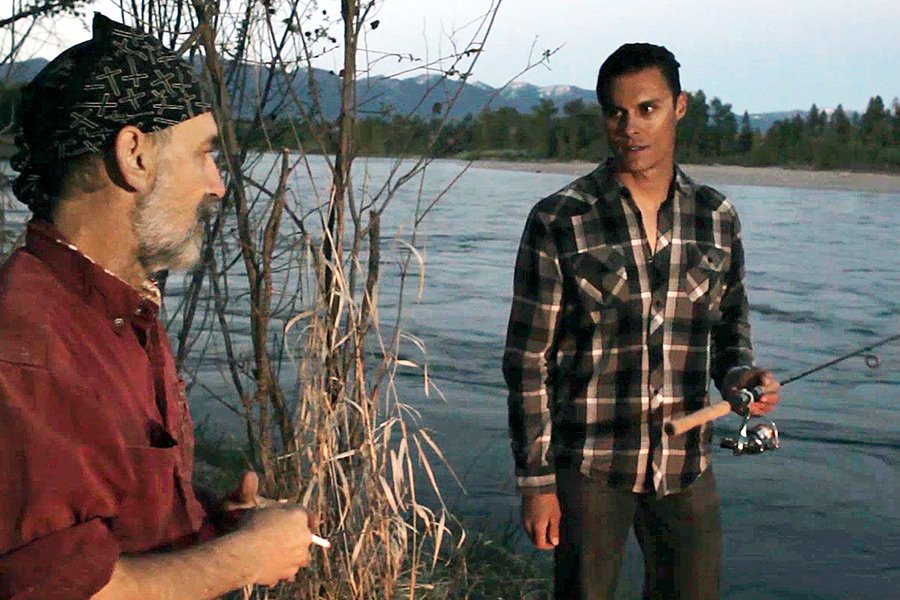Flathead Valley Filmmakers Ready for Their Close-Up
As technology becomes more affordable and widespread, the movie-making scene in the Flathead continues to grow
By Molly Priddy
When Andrew Wiest first started making movies about 12 years ago, the Wyoming native was faced with a quandary.
In 2004, when he dipped into the industry, the road to success ran through Los Angeles or New York City, two of the movie business’ major hubs. Both cities are full of actors, producers, directors, screenwriters, and all the people you would need to build a film, Wiest said, but they were also just that: full of people.
“I’d go to Los Angeles for a week for meetings and that’s about all I could take,” Wiest, who now lives in Montana, said. “I made a decision that I’m going to make movies where I live. I love it. I love Montana.”
Wiest now has his fifth feature film under his belt, and each movie he’s made has either been partially or entirely shot in Montana, specifically the Flathead. The latest film, “The Forlorned,” is the brainchild of Kalispell author Angela Townsend, and is turning heads in Hollywood.
“I’m making it here,” Wiest said of his career. “It’s very important for me to do that. I’ve been lucky enough to have a career doing it that way.”
Montana has taken center stage for several major film projects in the last year, including the Oscar-nominated powerhouse “The Revenant,” and the upcoming drama “Certain Women,” based on short stories by Maile Meloy, starring Michelle Williams and Kristen Stewart, and written and directed by Kelly Reichardt.
According to the Montana Film Office, there were approximately 110 productions shot in the state in 2015, including at least six feature films. It’s a considerable jump from 2013 and 2014, when there were 80 productions shot here.
Film Office spokesperson Rachel Gregg said Montana’s recognition as a film-friendly state is increasing, and her office is currently helping three feature films interested in shooting here.
And while major Hollywood projects are always courted, due to the amount of money they bring to the local economies, independent movies from local filmmakers are gaining ground.
Issues that would have presented roadblocks 10 years ago aren’t even in the conversation anymore, thanks to the proliferation of technology and digital communication, Wiest said.
For starters, the camera he used to make his first film, “Dead Noon,” which was distributed through Lions Gate Entertainment, wouldn’t pass muster these days.
“It’s changed so much,” he said. “Nowadays those cameras would be considered completely cruddy. They’re shooting considerably cruddier film than iPhones.”
Now, private citizens can buy high-quality cameras, such as those shooting 4K high-definition digital video, for less than $1,000, and can choose from a variety of editing software.
“I couldn’t imagine when I was starting out having this sort of gear,” Wiest said.
Having a massive budget would certainly help local filmmakers with their projects, but with help from other avenues, they’re learning to make it with small- to mid-level checkbooks.
Ric Ellingson, who serves as the writer, producer, director, cinematographer, and music director for the film “Flower in the Dirt,” said he decided to the film in the Flathead because it was a better way of getting his other screenplays noticed. This way, instead of just asking a studio to read his work, he can show them a solid production as well.
“That’s why everyone’s making movies now, because you can,” Ellingson said. “You couldn’t a few years ago, because the cost was prohibitive.”
He estimates that he spent about $4,000 making the movie, which he self-financed. Wiest said he also self-financed his first two productions in order to gain attention and financing for future projects.
Filming in Montana has other advantages over Hollywood, Wiest said.
“It’s cheaper, and I think the other advantage you have is you work with people who really want to come to Montana,” he said. “Especially people in California, Montana’s like the Promised Land to them.”
The Flathead is also a great place to search for talent and help, Ellingson said.
“It wasn’t too hard to come up with people around here who want to do this,” he said. “They’re hungry for it.”
Once the movie is made, the next step is finding someone to distribute it. Townsend, the author behind “The Forlorned,” said having a good attorney in the industry has helped her immensely, but she’s also gotten creative with her efforts to catch the eyes of the studio big wigs.
Townsend hired a few people locally to put together the press kits for the film, which consist of huge hardback books that open to reveal sea noises, a film canister, trinkets linked to the movies, shells, and then the pertinent movie literature.
Aspects like that could help bring Hollywood attention to her Flathead-made film, she said.
Wiest said he’s enjoyed watching filmmaking take hold in the Flathead, and that is has grown considerably even in just the decade he’s been here. And shooting a feature film gives back to the economy, with actors in hotels and at restaurants, and other local purchases.
There are people willing to finance projects up here, Wiest said, and the more people keep creating movies here, the easier it will be to connect the dots.
“To see a lot of people do this and make a go of it, it’s really cool,” Wiest said. “The community supports you, they get excited about it. I don’t think you run into that in LA. I think it is a huge growing business and I’d like to see it keep going.”